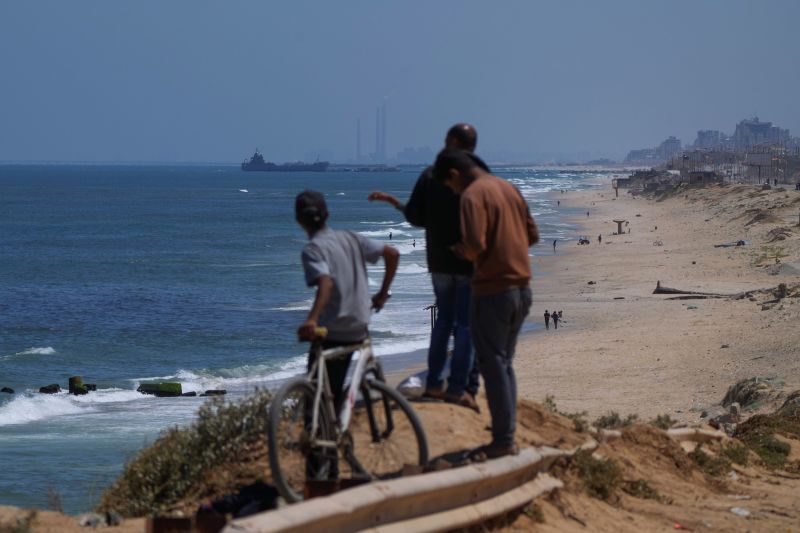Trucks carrying humanitarian aid into Gaza have begun moving ashore after arriving through the floating pier built by the US military, according to the US Central Command (CENTCOM).
The pier was anchored to a beach in Gaza on Thursday and will be used to funnel aid from various countries into the besieged strip, with most border crossings to the enclave closed and a catastrophic humanitarian disaster unfolding inside.
No US troops went ashore in Gaza, according to CENTCOM.
The goal is to get about 500 tons of humanitarian assistance into Gaza through the pier daily, according to Adm. Brad Cooper, the commander of CENTCOM. That means about 90 trucks worth of aid a day, and the goal is to build up to 150 trucks a day.
The maritime corridor is coming at a critical moment – with the Rafah border crossing to Gaza having been closed for more than a week, preventing aid from getting through. That crossing was the only one between Gaza and Egypt – with all other border points in the strip controlled by Israel
Here’s what we know about the new aid route.
How was the pier built and how will it work?
The US began building the floating pier in late April at a cost of $320 million and with the help of some 1,000 US soldiers and sailors. The US said that it is only a temporary measure that is “entirely humanitarian in nature.”
Pieces for the pier were loaded aboard ships on the East Coast of the US and then “transported 6,000 miles across the ocean,” according to CENTCOM’s Cooper. The pieces were assembled off the coast of Gaza, with final assembly taking place in the Israeli port of Ashdod.
The aid delivered via the pier will go through several steps before reaching Gaza. It will arrive to Cyprus by either air or sea where it will be screened by the US and Israel and palletized before being brought by ship to a floating platform near the Gaza coast. Then it is finally transported to the floating pier and loaded onto trucks to distribute on land.
The UN’s World Food Programme will be responsible for receiving and distributing the aid in Gaza.
Why is aid being shipped this way?
Most land crossings into Gaza remain either shut or congested due to lengthy inspections by Israel. That has led the US and other countries to start air-dropping aid into Gaza, which human rights organizations have criticized as ineffective.
The UN has warned of famine setting in in parts of Gaza, calling on Israel to open more land crossings for aid. USAID Administrator Samantha Power, the top US humanitarian official, has also assessed it is “credible” that famine is already occurring in parts of Gaza.
The US State Department warned that only 50 humanitarian aid trucks made it through to Gaza on Sunday, down from hundreds per day in previous weeks, adding that the number is “not nearly enough.”
The UN estimates that 500 trucks are needed per day to alleviate the suffering of Gazans.
In March, the first batch of humanitarian aid by sea was delivered in an operation separate from the US pier project.
Today, only the Israeli-controlled Kerem Shalom crossing and the “Western Erez” Crossing in northern Gaza are open, although the amount of aid trickling through them is nowhere close to what Gaza needs.
The Rafah crossing with Egypt, the entry point for nearly a quarter of all aid into Gaza, was closed last week after Israel seized it as part of a ground offensive into the city.



























